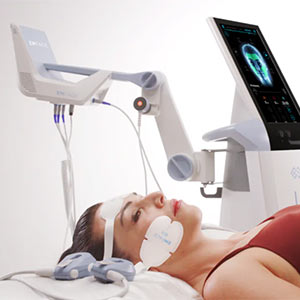Facial Symmetry with Emface: Achieving Balance Naturally
Facial symmetry has long been associated with beauty and attractiveness. From ancient civilizations to modern-day beauty standards, a balanced face is often seen as the epitome of aesthetic appeal. But what if your face isn’t perfectly symmetrical? Is there a way to enhance its balance without resorting to invasive procedures? Enter the world of non-invasive treatments like Emface that promise to bring harmony to your features.
The Reality of Facial Asymmetry
It’s essential to understand that no face is 100% symmetrical. As highlighted by Gemmaetc, an asymmetrical face means that one side doesn’t perfectly match the other. This can be due to genetics, aging, or even lifestyle habits. For instance, consistently sleeping on one side or adopting certain facial expressions can lead to asymmetry.
Moreover, a study from ScienceDirect suggests that facial asymmetry can be a natural occurrence, giving your face character and uniqueness. Factors like genetics, sun exposure, and even sleeping positions can contribute to this asymmetry.
Emface: The Non-Invasive Solution
For those looking to address facial asymmetry without going under the knife, Emface offers a promising solution. Offered at Janerich Wellness, this non-invasive procedure aims to restore balance to your features, enhancing your natural beauty.
Tips to Improve Facial Symmetry
Apart from professional treatments, there are several ways to work towards a more symmetrical face:
- Mind Your Sleeping Habits: As mentioned on Gemmaetc, avoid sleeping on your face or stomach. Opt for back or side sleeping to maintain balanced facial features.
- Face Yoga: Engaging in face yoga exercises can help tighten and tone facial muscles, leading to better symmetry.
- Personal Grooming: Pay attention to your eyebrows, beard, and hair. Making slight adjustments can enhance facial balance.
- Makeup Techniques: Skillful application of makeup can create the illusion of a more symmetrical face. Contouring with bronzers, highlighters, and concealers can help achieve a balanced appearance.
The Impact of Stress on Facial Asymmetry and Related Syndromes
Facial asymmetry, while often a natural occurrence, can sometimes be influenced by various external and internal factors. One such factor that has been speculated upon is stress. Additionally, certain syndromes and conditions can also lead to facial asymmetry. Let’s delve deeper into these aspects.
Can Stress Cause Facial Asymmetry?
Stress, both chronic and acute, can have a myriad of effects on the body. While there’s no direct scientific evidence linking stress to facial asymmetry, stress can lead to certain behaviors and conditions that might indirectly influence facial balance:
- Bruxism (Teeth Grinding): Chronic stress can lead to bruxism, where individuals unconsciously grind or clench their teeth, especially during sleep. Over time, this can lead to changes in the jaw muscles and might influence facial symmetry.
- Skin Conditions: Stress can exacerbate skin conditions like acne, rosacea, and eczema. Such conditions, especially if they’re predominant on one side of the face, can give the appearance of asymmetry.
- Aging: Chronic stress can accelerate the aging process. As the skin loses its elasticity, it can lead to sagging or drooping on one side, contributing to facial imbalance.
Syndromes Related to Facial Asymmetry:
Several syndromes and conditions can lead to facial asymmetry:
- Hemifacial Microsomia: This is a condition where one side of the face is underdeveloped, leading to noticeable asymmetry.
- Parry-Romberg Syndrome: A rare disorder where the skin and soft tissues on one side of the face deteriorate, leading to a sunken appearance.
- Bell’s Palsy: A sudden weakness or paralysis of facial muscles on one side can lead to a drooping appearance, creating temporary facial asymmetry.
- Birth Injuries: In some cases, birth injuries or trauma can lead to facial nerve damage, resulting in asymmetry.
- Tumors or Growths: Any growth on one side of the face, whether benign or malignant, can lead to facial imbalance.
In conclusion, while stress might indirectly influence facial symmetry, it’s essential to consider other factors and conditions that can lead to facial asymmetry. If you notice any sudden changes in your facial balance, it’s crucial to consult with a medical professional to rule out underlying conditions or syndromes.
Embracing Your Unique Features
While striving for facial symmetry can enhance your aesthetic appeal, it’s crucial to remember that your unique features make you stand out. As highlighted by Link Springer, perfect facial symmetry is rare, and there’s a reason behind it. The slight imperfections and asymmetries give your face character and make you unique.While facial symmetry is often associated with beauty, it’s the slight imperfections that make each of us unique. However, if you’re looking to enhance your facial balance, non-invasive treatments like Emface at Janerich Wellness offer a promising solution. Embrace your features, seek balance, and remember that true beauty lies in being authentically you.





